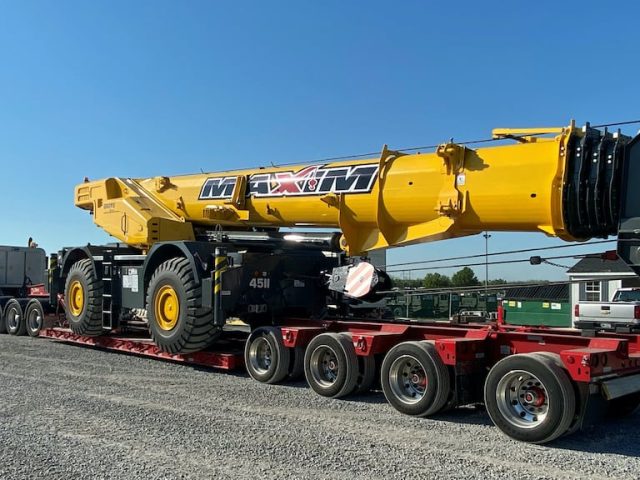
Maxim Crane is a coast-to-coast provider of crane rental and lifting services and situated over 54 locations on different continents. Today, they are going to share with us some tips on choosing the right crane for your project.
[quads id=1]
Virtually all construction projects require the lifting, hauling or transportation of heavy materials – which is why cranes play a gigantic role in the development of your project.
Deciding which crane is right for your objectives can be an overwhelming task, as the range of options available is limitless! There is an enormous variety of cranes – each designed for a specific function or use. One example is tower cranes – these are fixed to the ground in large concrete footings or use weighted City base’s when a concrete footer isn’t needed.
Tower cranes are commonly used in the construction of tall buildings and are attached to various floors as the building rises. They are unique as they have the ability to climb the building as it rises. Tower cranes can add their own tower sections when equipped with a climber section. The climber allows the crane to jack the tower up enough to add 1 section of tower per move.
The climber section also gives the crane the ability to lower its self-back down the side of a building once the building is completed. Once it is at a lower elevation a mobile crane can disassemble the crane and load it out until it is gone as if it was never there.
Selecting the right crane for the job definitely requires preliminary preparation and planning but is an absolutely essential process, as it not only ensures your construction site is safe for workers and the public but can also help you reduce costs and inefficiency, keeping your project on track, budget and schedule.
[irp]
3 Factors When Choosing a Crane
1. Duration of the Job and Size & Weight of Load
Cranes have different specifications, capacities and functionalities. Understanding what your project requires from a crane will help you select equipment that can best meet your projects demands and will quickly narrow down your options. To fully understand the capabilities of the crane you are interested in renting or purchasing it’s always best to contact your local Maxim crane specialist for assistance.
There is no charge for this service and they can help you size the crane that’s best suited for your application. Your Maxim rep will help you review various Load charts to understand the crane’s capabilities, structural strengths and dimensions. LOAD CHARTS will detail vital features of the crane such as boom length and the Rated Capacity – this is the Gross weight that any crane can lift at a given radius (distance).
When determining the right crane the crane hook block and or ball, as well as all rigging /cable, must be deducted from this gross capacity to arrive at the safest crane for your particular project.
The manufacturers’ charts will give you the exact specifications and dimensions of the machine. These graphs will allow you to calculate your maximum lift within any given radius. Getting this right will help you avoid selecting a crane with too little capacity, and will ensure it will fit into your job site with no obstructions. All of these factors ensure that your job will be profitable and go as planned.
2. Transportation of Equipment
The question of how the equipment will be transported could be initially overlooked, however, it is a critical consideration.
Broadly speaking, cranes can be classified as either Mobile, Rough Terrain/Crawler or Tower – all with different transportation methods. Permitting for City and State laws are all factors in the transportation of cranes and heavy equipment. The permit routing may take the crane in what would seem like an indirect route. This is done in order to avoid a low capacity or low clearance bridge or a roadway that is not sufficient for large loads or trailers to avoid accidents or other traffic issues such as road construction.
3. Conditions of the Construction Site
The condition and terrain of the construction site also have a bearing on the type of crane you should be going after. Understanding weather conditions, spatial constraints and the ground conditions of your site, will give you great insight into which equipment will help you meet your objectives with efficiency.
For example, rough terrain cranes are best suited to off-road construction sites as they are best equipped to deal with complicated ground conditions compared to all-terrain cranes. The degree of mobility you require will also dictate the type of equipment needed. For instance, if your project requires flexibility and precise delivery in tight spaces, a mini-crane may be right for you.
[irp]
We would like to thank Maxim Cranes for providing these tips to the readers. You can read the full article here or visit their website at http://www.cranerental.com to learn more about crane rental, heavy hauling and specialized rigging services.




